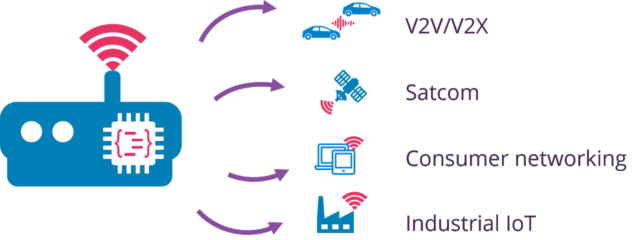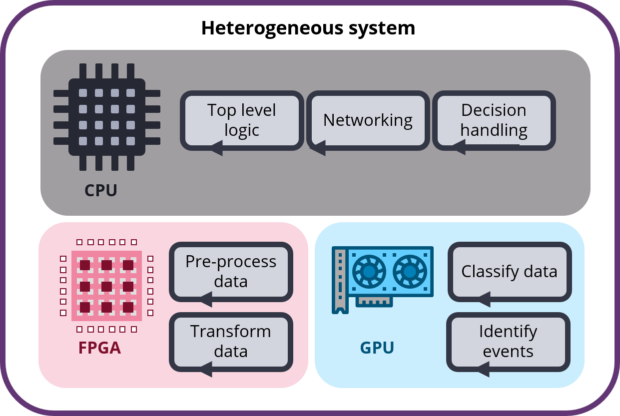Technologies
- Articles
- July 19, 2021
Software-Defined Radio
Intelligent radio is at its core an extension of software-defined radio technologies. Software-defined radio’s (SDR) are radio devices that can transmit and receive a range of signals, but have many of their radio functions implemented in software, rather than as circuit components. There are many functions as part of a radio system, some examples include which protocols to use, what frequencies to operate at, or the type of filter to apply to a signal. Many of these can be implemented in software.
Doing so allows a single device to be applied to many different purposes, based on the software used. As an example, the same hardware can be used to broadcast audio, as portable communications device, or as a wireless access point. Many SDR’s can be used together to achieve complex engineering objectives.

SDR’s provide flexibility and new capabilities to radio technologies. SDR has enabled the implementation of methods that was previously thought impossible. They enabled the creation of foundational 5G technologies such as massive MIMO, and beamforming, or the exploration of spectrum sharing technologies.
Qoherent is building its stack on top of world-class SDR technology.
Machine Learning
Intelligent radio is the application of machine learning to software-defined radio. In intelligent radio systems, machine learning is used in place of, or together with hand-crafted algorithms to complete radio or communications tasks.
The objective is to give the radio the ability to recognize signals it observes, to think, to decide, and to act. Machine learning is the key part of this. Machine learning is a form of artificial intelligence technology, where software is made to learn from data, then applies that learning without human intervention. That is, algorithms are “trained” by data rather than “programmed” by an expert.
Machine learning has revolutionized the fields of machine vision and audio signal processing. The advent of machine learning created the opportunity to produce technologies previously thought impossible. In audio, machine learning is used to power consumer applications, such as recognizing music, or emulating high-fidelity sound. In vision, it powers the algorithms behind next-generation medical imaging, helping detect cancers where humans cant.
Machine learning algorithms can be used to detect, identify, and classify features of interest in data in ways that perform better and more flexibly than equivalent hand-crafted algorithms. In radio, machine learning can be used to identify signal structure, detect signals in noisy conditions, and perform signal processing tasks. Much of the underlying theory of applying machine learning to radio is the same as that of vision and audio. As a result, there is growing interest in designing modern RF systems. The emphasis on ML is seen in requirements of telecom standards (e.g. 5G NR, O-RAN, CBRS). Qoherent’s goal is to drive the adoption of machine learning in radio.
Heterogenous Computing and Quantum Computing
Intelligent radio tasks are compute-intensive. RF datasets can be considerably large, and signals within them may be minute or masked by noise. Training a model on RF data requires significant computational resources. Competing system requirements (such as high throughput, low latency, real-time, embedded, high performance, distributed) also add to the challenge. Intelligent radio technologies benefit from the use of mix of processor types known as heterogeneous computing. In heterogeneous computing, multiple dissimilar processing types (e.g CPU, FPGA, GPU, ASIC) are used together to achieve system design goals, with software components being deployed to the appropriate processor. This results in a system that can outperform one being run on a single dedicated processor, with the potential for using fewer resources.

Heterogeneous computing powers some of the most powerful modern applications. Game consoles are powered by CPU’s and GPU’s. The control systems of heavy machinery is by RT-CPU’s and FPGA’s. The engine control units of cars contain a mix of processing types. Heterogeneous computing is a critical tool in the future of systems design.

Qoherent is focused on heterogeneous computing, and is investigating the deployment of a new processing type, quantum computing, into the mix. Qoherent produces research, solutions, and exploration tools for deploying quantum computing into intelligent radio applications. Qoherent investigates quantum enhancements to machine learning with NISQ quantum .